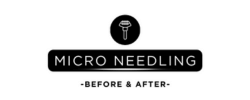En mi recorrido por el cambiante mundo de los tratamientos para el cuidado de la piel, me he encontrado con innumerables preguntas sobre la microaguja. ¿La más común? "¿De verdad funciona?". Hoy quiero compartir mi investigación y mis conocimientos personales sobre este popular tratamiento de rejuvenecimiento de la piel que parece estar de moda últimamente.
¿Qué es realmente el microneedling?
Antes de profundizar en su eficacia, aclaremos de qué estamos hablando. La microaguja (también llamada terapia de inducción de colágeno) utiliza agujas diminutas para crear microlesiones controladas en la superficie de la piel. Estas micropunciones desencadenan la respuesta natural de curación del cuerpo, estimulando la producción de colágeno y elastina. Suena intenso, ¿verdad? ¡Yo también lo pensé al principio!
La ciencia detrás de las diminutas agujas
He dedicado horas a investigar la evidencia científica, y esto es lo que he descubierto: estudios clínicos demuestran consistentemente que la microaguja puede mejorar la textura de la piel, reducir las cicatrices, minimizar el tamaño de los poros y disminuir las líneas de expresión. La razón es simple pero fascinante: a nuestra piel le encanta curarse a sí misma, y la microaguja le da una razón para hacerlo.
Microagujas tradicional vs. RF vs. PRP: ¿cuál es la diferencia?
Cuando comencé a explorar la microaguja, me confundieron todas las variaciones:
- Microagujas tradicionales Utiliza sólo las agujas para estimular el colágeno.
- Microagujas de radiofrecuencia Combina esas agujas con energía de radiofrecuencia para obtener mejores resultados.
- Microagujas PRP Agrega plasma rico en plaquetas de su propia sangre para potenciar la curación.
En mi experiencia, la microaguja tradicional funciona bien para problemas leves, pero la microaguja de radiofrecuencia ofrece resultados más drásticos para arrugas más profundas y cicatrices de acné. La energía de radiofrecuencia penetra más profundamente, calentando el tejido subyacente y mejorando la producción de colágeno. Por otro lado, la microaguja de PRP (a veces con variantes como la PRF) ha sido mi opción preferida para un rejuvenecimiento más completo, especialmente combinada con fototerapia.
Beneficios que me sorprendieron
Al principio era escéptico, pero aquí hay algunos beneficios que he observado personalmente:
- Textura de la piel mejorada – En cuestión de semanas, mi piel se sintió notablemente más suave.
- Reducción de las cicatrices del acné – Las cicatrices antiguas comenzaron a desaparecer después de unas pocas sesiones.
- Poros minimizados – Algo que no esperaba pero que acogí con entusiasmo.
- Mejor absorción del producto – Mis productos de cuidado de la piel parecieron funcionar mejor después del tratamiento.
- Tono de piel más uniforme – Las manchas de hiperpigmentación se aclararon considerablemente
La verdad honesta: ¿Duele?
¿Duele la microaguja? No lo voy a endulzar: no es indolora. Sin embargo, la mayoría de los profesionales aplican crema anestésica antes, lo que la hace bastante tolerable. Describiría la sensación como más incómoda que dolorosa, como una quemadura solar leve o un ligero hormigueo. Las agujas más profundas que se usan en la microaguja de radiofrecuencia pueden ser un poco más intensas, pero aún así manejables.
Recuperación de la microaguja: qué esperar
Después de mis tratamientos, experimenté:
- Enrojecimiento durante 24 a 48 horas (que parece una quemadura solar leve)
- Un poco de hinchazón temporal
- Descamación ocasional a medida que mi piel sanaba.
- Pequeños puntos blancos después de la microaguja (que se resolvió rápidamente con el cuidado posterior adecuado)
Seguir las instrucciones de cuidados posteriores a la microaguja de mi dermatólogo fue crucial: una limpieza suave, humectación y la aplicación regular de protector solar ayudaron a acelerar la curación y maximizar los resultados.
¿Quién debería realizarle microagujas?
Una consideración importante que descubrí: las regulaciones sobre microagujas para esteticistas varían considerablemente según el estado. Algunos estados clasifican la microaguja como un procedimiento médico que requiere supervisión médica, mientras que otros permiten que la realicen esteticistas con licencia. Recomiendo encarecidamente investigar las leyes estatales sobre microagujas en su lugar de residencia antes de programar una cita.
Personalmente, prefiero consultar a un dermatólogo o un profesional médico especializado en microagujas, especialmente para tratamientos más profundos como la microaguja RF o cuando se combina con PRP/PRF.
Aplicaciones inesperadas
Durante mi investigación, descubrí que la gente usa la microaguja en zonas que no había considerado, como la zona del bikini para estrías o cicatrices. Los dispositivos domésticos como el rodillo de microagujas también se han popularizado, aunque son mucho menos potentes que los equipos profesionales.
¿Vale la pena?
Después de varias sesiones y una investigación exhaustiva, mi veredicto es sí: la microaguja realmente funciona, pero con algunas salvedades:
- Los resultados no son inmediatos; se acumulan con el tiempo y múltiples sesiones.
- Funciona mejor para algunas preocupaciones que para otras.
- El nivel de habilidad del proveedor es muy importante
- Los rodillos caseros proporcionan resultados suaves en comparación con los tratamientos profesionales.
- Los resultados individuales varían según la edad, el estado de la piel y la genética.
Para obtener los mejores resultados, he descubierto que la combinación de técnicas (como la microaguja PRP con terapia de luz) produce las mejoras más espectaculares, aunque estos tratamientos combinados tienen un precio más elevado.
¿Has probado la microaguja o te lo estás planteando? Me encantaría leer tus experiencias en los comentarios. Y si tienes curiosidad sobre aspectos específicos como los procedimientos de microagujas PRP o consejos de recuperación, ¡consulta mis otras publicaciones que abarcan desde protocolos de tratamiento hasta guías completas de cuidados posteriores!

